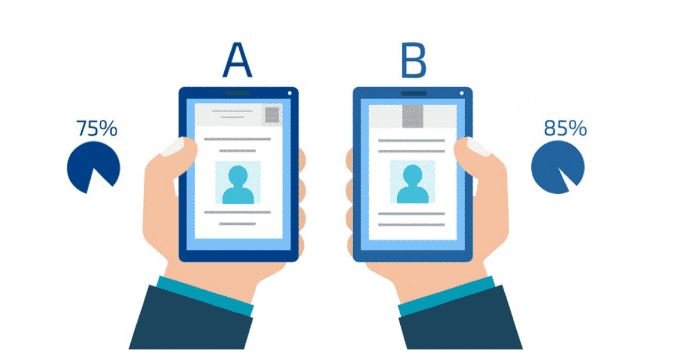A/B testing Facebook ad variations can significantly improve the performance of your campaigns. This method, also known as split testing, allows you to compare two or more ad versions to determine which performs better with your target audience. By testing variations, you gain insights that guide your future decisions and optimize your ad spend effectively.

What is A/B Testing?
A/B testing involves creating two or more variations of an ad and running them simultaneously to see which version delivers better results. For example, you could test different headlines, images, or calls-to-action (CTAs) to identify the elements that resonate most with your audience. By analyzing the performance data, you can make data-driven adjustments to your campaign.
Identify Testing Variables
Before starting your A/B test, identify the variables you want to test. Common elements include ad copy, visuals, CTAs, and targeting. Focusing on one variable at a time ensures that you can accurately measure the impact of that specific change. For instance, if you’re testing ad copy, keep the images and targeting the same across both versions.
Set Clear Objectives
Setting clear objectives for your A/B test is essential for measuring success. Define what you want to achieve, whether it’s a higher click-through rate (CTR), lower cost-per-click (CPC), or increased conversions. Establishing these goals will help you determine which ad variation performs best and aligns with your campaign objectives.
Choose the Right Audience
Selecting the right audience is crucial for accurate A/B testing results. Make sure you’re targeting a relevant and consistent audience for both ad variations. This consistency ensures that any differences in performance are due to the variations in the ad, not changes in the audience. For example, if you’re targeting new customers, keep the audience demographics the same for both versions.
Monitor Key Metrics
During your A/B test, monitor key metrics such as CTR, conversion rates, and engagement. These metrics provide valuable insights into how your audience responds to each ad variation. For instance, if one version of your ad generates a higher CTR but fewer conversions, you might need to refine the landing page or CTA to improve the user experience.
Run Tests Simultaneously
To obtain accurate results, run your A/B tests simultaneously rather than sequentially. Running both ad variations at the same time ensures that external factors, such as time of day or changes in market conditions, don’t influence the results. For example, if you run one variation during a holiday and the other afterward, you won’t get a true comparison of performance.
Use Adequate Sample Size
Ensure that your A/B test reaches an adequate sample size to produce statistically significant results. Running your test with too small an audience can lead to unreliable conclusions. For example, if your sample size is too small, you might incorrectly assume that one ad variation performs better when, in reality, the difference is due to chance.
Test Multiple Elements Over Time
Although testing one variable at a time provides clear insights, consider testing multiple elements over time to continuously optimize your ads. After completing one test, use the winning variation as a baseline for your next A/B test. For instance, after testing headlines, you can then test different images or CTAs to further refine your ad.
Leverage Facebook’s Split Testing Tool
Facebook’s built-in split testing tool makes it easy to conduct A/B tests. This tool automates the process and ensures that your audience is evenly split between the ad variations. By using this tool, you can focus on analyzing the results rather than managing the logistics of the test.
Analyze and Implement Findings
Once your A/B test concludes, analyze the results and implement the findings. Determine which ad variation met your objectives and use those insights to optimize your current and future campaigns. For example, if a particular CTA drives more conversions, incorporate it into your next set of ads.
Conclusion
A/B testing Facebook ad variations is a powerful strategy for optimizing your campaigns. By identifying variables, setting clear objectives, and monitoring key metrics, you can make data-driven decisions that improve your ad performance. Run your tests simultaneously, use an adequate sample size, and leverage Facebook’s split testing tool to maximize the effectiveness of your A/B tests. Continuous testing and optimization will help you create high-performing Facebook ads that resonate with your audience.



